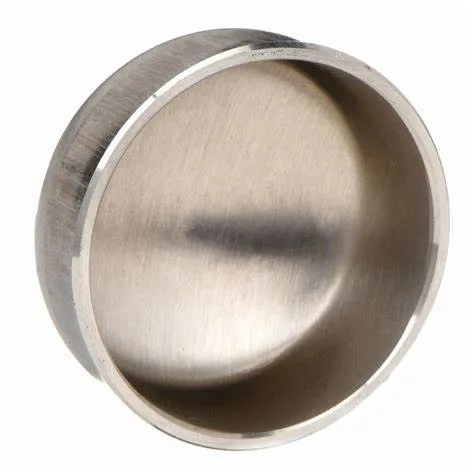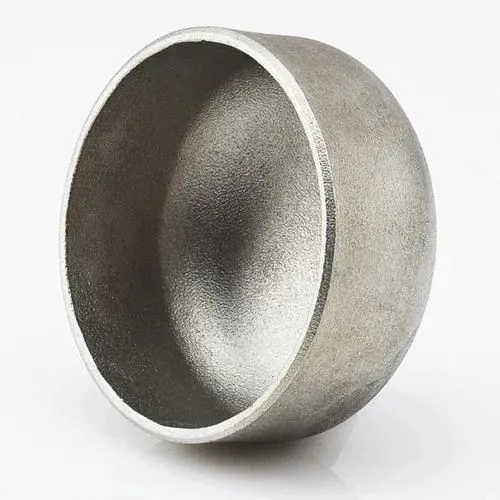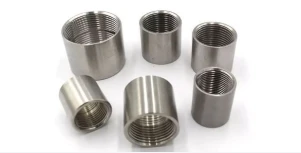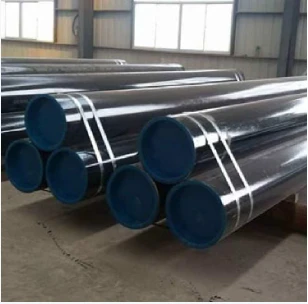JIS B2311 është një standard Industrial Japonez që mbulon pajisjet e tubave të saldimit me prapanicë, duke përfshirë kapakët e përdorur në sistemet e tubacioneve. Kapakët e saldimit me prapanicë shërbejnë për qëllimin e mbylljes së fundit të një tubi, duke siguruar një vulë për të parandaluar rrjedhjet ose ndotjen. Këtu është një hyrje në kapakët e saldimit me prapanicë JIS B2311:
- 1. JIS B2311 Standard:
- - Standardi JIS B2311 specifikon kërkesat për projektimin, dimensionet, materialet, prodhimin dhe testimin e pajisjeve të saldimit me prapanicë, duke përfshirë kapakët, në sistemet e tubacioneve.
- - Standardi siguron që kapakët e prodhuar në përputhje me standardet JIS plotësojnë standardet e cilësisë dhe janë në përputhje me komponentët e tjerë të tubacioneve.
- 2. Kapak saldimi me prapanicë:
- - Një kapak saldimi me prapanicë, sipas JIS B2311, është një pajisje e krijuar për të mbuluar dhe vulosur në mënyrë të sigurt fundin e një tubi, duke ofruar mbrojtje dhe duke ruajtur integritetin e sistemit të tubacioneve.
- - Kapakët përdoren në situatat kur fundi i tubit kërkon mbyllje, përgjithmonë ose përkohësisht, për të parandaluar rrjedhjet, ndotjen ose për të siguruar një përfundim të sistemit.
- 3. Materiali dhe ndërtimi:
- - Kapakët e saldimit me prapanicë sipas specifikimeve JIS B2311 janë të disponueshme në materiale të ndryshme si çeliku i karbonit, çeliku inox dhe çeliku i aliazhuar për të përmbushur kërkesat e ndryshme të aplikimit.
- - Këto kapele prodhohen duke përdorur metoda të standardizuara të ndërtimit për të siguruar një lidhje të fortë dhe pa rrjedhje kur saldohen në fund të një tubi.
- 4. Aplikimi dhe përfitimet:
- - Kapakët e saldimit me prapanicë gjejnë aplikime në industri të ndryshme, duke përfshirë naftën dhe gazin, proceset kimike, impiantet e trajtimit të ujit dhe më shumë ku mbaresat e tubave duhet të mbyllen mirë.
- - Kapakët sigurojnë mbrojtje të skajeve të tubave nga elementët mjedisorë, parandalojnë kontaminimin dhe ndihmojnë në ruajtjen e pastërtisë dhe integritetit të sistemit të tubacioneve.
- 5. Instalimi dhe saldimi:
- - Praktikat e duhura të instalimit, duke përfshirë shtrirjen e saktë, përgatitjen e skajit të tubit dhe teknikat e saldimit, janë thelbësore gjatë instalimit të tapave të saldimit në prapanicë për të siguruar një vulosje të ngushtë dhe të rezistueshme nga rrjedhjet.
- - Saldimi është një metodë e zakonshme për ngjitjen e kapakëve në tuba, duke siguruar një mbyllje të sigurt dhe të përhershme që mund të përballojë presionin, ndryshimet e temperaturës dhe rrjedhjen e lëngut brenda sistemit.
- Si përmbledhje, kapakët e saldimit me prapanicë JIS B2311 janë komponentë thelbësorë që përdoren në sistemet e tubacioneve për të mbyllur dhe mbrojtur në mënyrë të sigurt fundin e tubave. Këto tapa përputhen me kërkesat e standardizuara për të siguruar cilësi, besueshmëri dhe përputhshmëri brenda aplikacioneve industriale ku mbyllja dhe mbrojtja e tubave janë të nevojshme.
What Is a Butt Welding Cap and How Is It Used in Industrial Piping?
In industrial piping systems, end-of-line sealing and branch closures require robust solutions. A butt welding cap serves as a critical component for terminating pipes securely. By providing a seamless, welded closure, this fitting maintains system integrity, prevents leaks, and supports compliance with industry standards.
What Is a Butt Welding Cap?
A butt welding cap—also called a pipe end cap or buttweld end cap—is a round fitting designed to close off the end of a pipe. It’s manufactured to match the pipe’s outer diameter and schedule, with either a hemispherical or flat face. To install, both the pipe end and cap are beveled to form a V‑groove, enabling full‑penetration, fusion welds. Common materials include carbon steel, stainless steel, nickel alloys, and other engineered grades, chosen to satisfy pressure, temperature, and corrosion‑resistance requirements.
How Is Butt Welding Cap Used in Industrial Piping?
Butt welding caps find application across oil & gas, petrochemical, power generation, water treatment, and general process industries for both permanent and temporary closures. During hydrostatic testing, technicians install caps to seal off sections of piping while monitoring for leaks. In new construction or retrofit projects, caps terminate branch lines, future tie‑in spools, or dead‑end mains until system expansion. Welders prepare each joint by cleaning and beveling surfaces, aligning the cap precisely, and executing a root pass followed by filler passes per the qualified Welding Procedure Specification (WPS). Post‑weld heat treatment and non‑destructive examination (NDE)—such as radiography or ultrasonic testing—verify weld integrity and compliance with ASME B16.9 and related standards. Additionally, temporary caps enable safe isolation during maintenance, allowing for segment testing and dewatering under regulatory protocols.
Benefits and Best Practices
Butt welding caps offer a smooth‑bore transition that minimizes flow disruption and stress concentration. Their full‑penetration welds deliver exceptional structural strength and leak resistance. To optimize performance, engineers should:
Select caps with matching material grades and wall thicknesses
Adhere to proper bevel angles and joint fit‑up tolerances
Follow qualified WPS protocols rigorously
Consider cladding or protective coatings in corrosive environments to extend service life
Regular inspection and thorough documentation ensure long‑term reliability and safe operation under demanding conditions.
Butt welding caps are indispensable components for achieving durable, leak‑proof pipe terminations in a wide range of industrial applications.
Butt Welding Cap FAQs
What is a butt welding cap?
|
What materials are commonly used?
|
What standards govern butt welding caps?
|
How are butt welding caps installed?
|
Where are butt welding caps typically used?
|
What are the advantages of threaded caps?
|
















